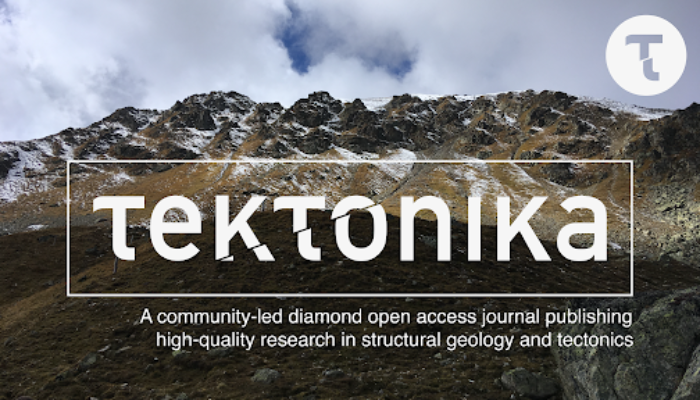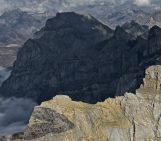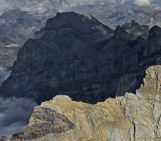
In a nutshell
Tektonika is a community-led Diamond Open Access journal (DOAJ) for tectonics and structural geology launching in early 2022. The journal will publish high quality peer-reviewed research that is free for authors and readers, offering an alternative to long-standing publishing models that conceal knowledge dissemination behind paid subscriptions. Community involvement is at Tektonika’s heart: from policy discussions, to transparent, community-driven decision making, the involvement of the community in all aspects of the journal is key. It will not only ensure the success of the project, but will also shape the most valuable and useful dissemination outlet possible while setting an example of transectionality and EDI.
Our vision
Grassroots DOAJ initiatives, such as Tektonika, represent an alternative model to the classic for-profit publishing route. In doing so, our aim is to secure access to scientific knowledge, and thus promote practices that reinforce a culture of real meritocracy and accelerate the abolition of biased and outdated means of evaluating research and researchers. We believe that enabling free access to scientific research through DOA initiatives is an urgent necessity.
How it all started
Tektonika follows the footsteps of Volcanica, a journal that pioneered community-led DOA publishing in geosciences. Tektonika is not alone in doing so. Over the past year, the diamond open access scene has witnessed the inception of several other sibling journals that are/will be offering a venue for the dissemination of free to read and free to publish research, like Seismica and Sedimentologika. These DOAJs naturally align with platforms that host and provide access to Earth Science preprints at no cost, and the community-led EarthArXiv in particular, and complement them by means of editorial handling and peer-review.

Jorge Cham (c) 2009, Nature Vs. Science Pt. 2, 07/17/2009
PhD Comics, Piled Higher and Deeper Publishing, LLC.
The idea to follow the lead of Volcanica to create a DOAJ for the tectonic and structural geology community was initiated via Twitter by a few researchers. To facilitate communication, a Slack channel was quickly set up. Soon thereafter, many motivated researchers joined the workspace, and now, more than 120 members participate in the decision making and activities to shape the journal, from the overarching journal ethos, scope and publishing practices, to the format of peer review mode, editorial management structure and journal-related outreach and mentoring activities.
We are Core, Mantle and Crust
The Tektonika community of volunteers is organized in a three-layered structure:
- The core acts as a provisional steering committee and is made of six individuals.
- The mantle is composed of Earth researchers that have joined and actively participate in the discussions that take place in the Slack workspace.
- The crust is formed by all the researchers interested in this initiative and that participate occasionally, for example by taking part in open discussions, filling questionnaires and answering pools concerning matters related to the journal, or by helping us spread the word about Tektonika to their friends and colleagues.
Together, the Tek-team has (to date) made decisions regarding some of the logistical aspects of running a journal, including its visual identity and branding, and how the webpage should be sustained and maintained. Importantly, Tektonika has reached an agreement with Aberdeen University Press to handle the scientific contributions after publication with the journal, including DOI assignment and long-term hosting. For its day-to-day handling of manuscripts, Tektonika will likely use OJS as a publishing management system. Beyond this, we have discussed and drafted the overall journal structure, defining the key editorial and managerial positions required to ensure that articles are handled and reviewed adequately and quality standards are met.
Discussion is still ongoing on other aspects, for example peer review modes. Since the early days, dozens of researchers have had discussions about what the peer review mode should be, and a few weeks ago, we conducted a survey among the members of our Slack, to gain insight into the group’s views. The results of this survey were shared recently, and we hope to continue gathering feedback in order to inform the final decisions.
Join in (applications open)!
We are excited about the journey ahead of us, and we are convinced that the broader and more diverse we are, the better Tektonika will be. As we prepare to launch the journal in 2022, there are many ways in which you can get involved:
You can ask to join our Slack group (by emailing jtektonika@gmail.com or sending us a DM on Twitter), in order to:
- Take part in discussions around Tektonika’s peer review mode, article types, scope definition and many other aspects of journal consolidation
- Apply to be part of the editorial and technical teams (applications will open the 1st of September and close on the 20th of September)
You can come along to our upcoming get-together at the DOA gather.town mansion, where you can learn more about Tektonika, meet some of the current team members and ask whatever question you may have. The get-together happens on the first Wednesday of every month at noon (GMT). To join, drop us an email at jtektonika@gmail.com or a DM on Twitter.
You can support Tektonika by helping us spread the word! Share this blogpost with friends and colleagues and follow us on Twitter!
…and, from 2022, we hope you will consider submitting your work to Tektonika, reviewing Tektonika’s manuscript, and helping the journal grow!
We hope to have piqued your curiosity and interest in Tektonika and diamond open access initiatives in general. Stay tuned for more updates to come as we get closer to our launch date in early 2022, get ready to submit your manuscripts and, if you care about open, accessible and inclusive science, jump on board!! If you have any questions, suggestions, doubts, ideas, follow us & get in touch via Twitter, Slack, and/or jtektonika@gmail.com. Come break new ground with us!
Written by David Fernández-Blanco, Lucia Perez-Diaz, Clare Bond, Mohamed Gouiza, Amicia Lee and Dave McCarthy (the Tekcore of Tektonika)



Taposkumar Goswami
Great initiative. I shall be very happy to be associated with Tektonika.
David Fernández-Blanco
Great to read that Taposkumar! Please, get in contact with the journal by emailing jtektonika@gmail.com or sending us a DM on Twitter @WeAreTektonika